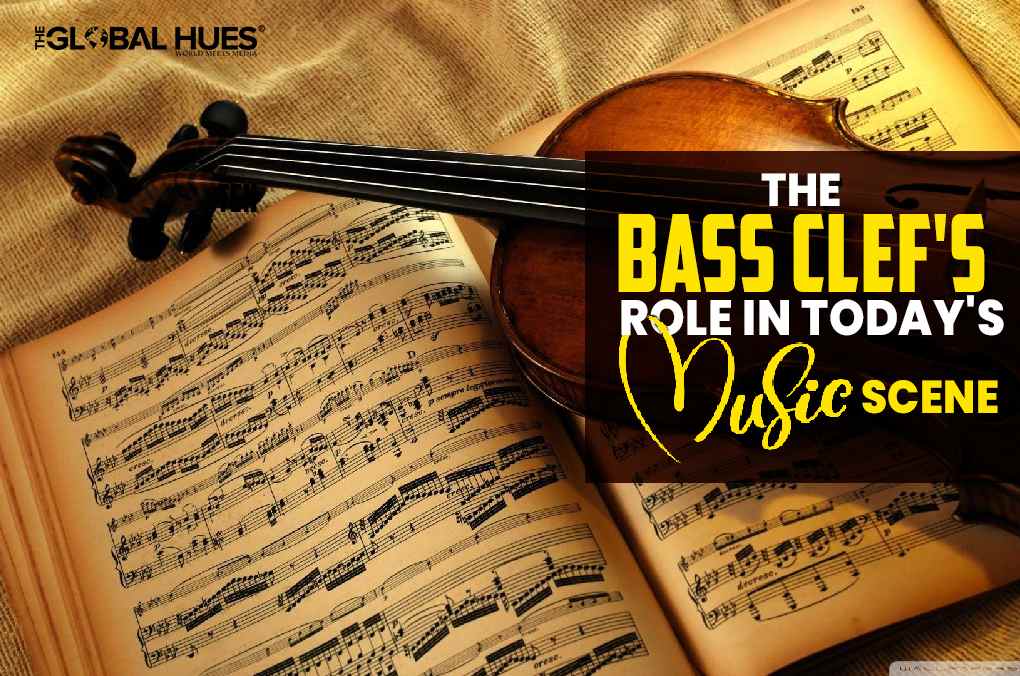The bass clef is an essential symbol in music notation that appears at the beginning of staves to indicate the pitch of written notes. It’s also known as the F clef because it curls around the fourth line of the staff, marking it as the note F below middle C. In general music, the bass clef is vital for low-pitched instruments like the cello, bassoon, trombone, and bass guitar, ensuring that their music is written in a range that is readable and not cluttered with ledger lines.
In contemporary music across genres like jazz, classical, pop, and electronic, the bass clef remains crucial. It anchors harmonic structure, provides rhythm, and supports the melodic lines, often dictating the groove and foundation upon which melodies are built. This makes it indispensable not only for bass instruments but also for left-hand piano parts and lower voices in choral arrangements, highlighting its continued relevance in today’s diverse musical landscape.
The Basics of the Bass Clef
The bass clef forms the foundation of sheet music for lower-pitched instruments. It’s easily recognized by its stylized “C” with two dots, which hug the F line on the staff. This clef isn’t just for bass instruments; it’s also used for the left hand in piano music, lower brass like the tuba, lower strings like the cello, and even for the lower register of the guitar.
Definition and Recognition: The bass clef, also known as the F clef, is a musical symbol used to notate lower pitches in music. It is easily recognized by its two dots and curved line, resembling a backward “C,” which encompass the fourth line of the staff, indicating the note F below middle C.
- Range and Application: This clef is primarily used for music that involves lower-pitched instruments and sounds. It allows for a clear representation of notes that would otherwise require numerous ledger lines above or below the staff, simplifying the reading process.
- Instrumentation: The bass clef is not exclusive to bass instruments; it’s utilized by a variety of instruments including the lower register of the piano, cello, bass guitar, tuba, and trombone. It’s also used for the lower voices in choral music, like bass and baritone.
- Clarity in Notation: By providing a dedicated clef for lower pitches, musicians can read and interpret complex bass lines and harmonies with greater ease. The bass clef helps to declutter the staff, presenting the music in a more readable and accessible format.
- Fundamental Role: Serving as the harmonic foundation in many pieces, the notes in the bass clef often outline the underlying chord progressions. They are essential in establishing the rhythm and harmony that support the melody, which typically lies in the treble clef.
- Educational Aspect: For music learners, understanding the bass clef is crucial. It is one of the first skills taught when learning to read music, especially for those who play low-pitched instruments or are involved in ensemble and orchestral settings.
Bass Clef in Sheet Music for Various Instruments
In the realm of sheet music, the bass clef does more than provide a notational foundation it tells a story. For instruments like the double bass, bassoon, and trombone, the bass clef is where their musical narrative unfolds. It’s here that bass players read the deep, resonant notes that provide the rhythmic backbone to a piece.
For pianists, the left-hand notes written in the bass clef create a rich, harmonic bed over which the right-hand’s melody can soar. Cellists read the sweeping lines of their parts in the bass clef, navigating a range that extends from sonorous lows to poignant highs. The bass clef is the map that guides these musicians through the landscape of sound, ensuring that every note is placed just where it needs to be for the music to resonate as intended.
The Role of the Bass Clef in Music Production
In the world of music production, the bass clef is less about notation and more about understanding the sonic role of lower frequencies. Producers pay close attention to the bass clef range to craft bass lines that support and enhance the track. It’s in this clef that the thump of a kick drum or the groove of a bass guitar comes to life, providing the pulse that drives a song forward.
The intricacies of arranging lower frequencies like the interplay between a rumbling bass synth and the low end of a rhythm guitar are what give a song depth and power. The bass clef’s influence extends beyond the score; it’s felt in the physical vibration of speakers and the way a bass drop can send a shiver down your spine. It’s a reminder that in music production, what you feel is just as important as what you hear.
Bass Clef in Contemporary Music Genres
In contemporary music genres, the bass clef remains a vital element, anchoring the harmonic framework and setting the rhythmic pulse. In genres like pop, hip-hop, and R&B, the bass clef is where the bass lines often played on synthesizers or electric bass reside. These bass lines are crucial, as they provide the foundation for catchy hooks and grooves that define the character of a song. For instance, the iconic bass riff in Michael Jackson’s “Billie Jean” is notated in the bass clef and is as essential to the song’s identity as the melody itself.
In rock and metal, the electric bass guitar follows the bass clef to deliver the powerful, driving lines that support distorted guitar chords and drum beats. Think of the beginning of Queen’s “Another One Bites the Dust” where the bass guitar introduces a line so memorable, it’s become one of the most recognizable riffs in music history.
In jazz, the double bass or electric bass guitar uses the bass clef to navigate complex chord changes and walking bass lines that syncopate with the melody, adding a layer of sophistication to the music. Classic examples include the walking bass in Miles Davis’s “So What” or the intricate patterns of Jaco Pastorius in Weather Report’s “Teen Town.”
Electric Bass Guitar and the Bass Clef
For the electric bass guitar specifically, the instrument is almost exclusively notated in the bass clef. It is the clef that bassists read when they learn songs, practice scales, and study music theory.
The electric bass plays a crucial role in defining the rhythm and harmonic base of a band or ensemble, making its notation in the bass clef essential for the execution of its role. Notable bassists like Flea from the Red Hot Chili Peppers or Les Claypool from Primus showcase the expressive potential of the electric bass within the bass clef through their innovative and genre-defining techniques.
Final thoughts
From the resonant strings of a cello to the vibrant lines of an electric bass guitar, the bass clef underpins every genre, shaping the foundation upon which melodies dance. It ensures that the warmth and depth of lower registers are not lost in translation, allowing musicians to deliver the richness that gives music its full-bodied character. In essence, the bass clef is not just a part of the music it’s the heartbeat, the pulse that allows music to flow with power and grace.




